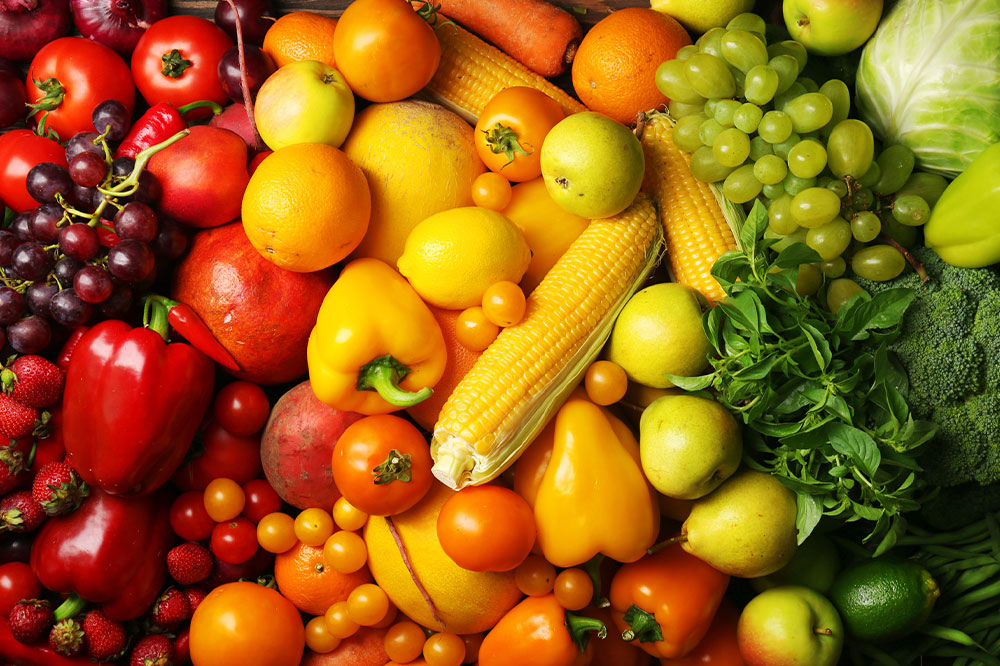
Managing AFib – Best foods to consider
Heart-related issues are some of the most concerning health concerns in the country. Of these, a key condition is atrial fibrillation or abnormal heart rhythm. The country sees over 454,000 hospitalizations with atrial fibrillation as the primary diagnosis, says the Centers for Disease Control and Prevention (CDC). However, one can prevent and manage the condition by making lifestyle changes, including healthy eating habits. Here are some heart-healthy foods to help deal with atrial fibrillation:
Causes and symptoms
Atrial fibrillation, or AFib, is heart arrhythmia or abnormal heart rhythm. The condition usually causes an irregular or fast heartbeat and can be fatal if not treated immediately. Atrial fibrillation is caused by an imbalance between the electrical impulses that control the heartbeat’s rhythm in the left atrium—the top section of the heart. One may have this irregular heartbeat for several months before or after being diagnosed with atrial fibrillation. The condition develops when the upper chambers of the heart beat irregularly and chaotically. An irregular heartbeat can cause severe damage to blood vessels, making them leak fluid. If left untreated, this fluid buildup can lead to organ failure and other serious complications. Here are some of the common causes of AFib:
- High blood pressure: One’s blood pressure rises when exercising and decreases when fasting. However, one should opt for regular checkups with the doctor if they have abnormal blood pressure fluctuations or high blood pressure (hypertension).
- Damage following a heart attack or surgery: If one has had a heart attack recently or major surgery on one of the arteries—such as an angioplasty—the risk of developing AFib increases significantly. AFib occurs in 20% to 40% of patients after getting a coronary artery bypass surgery.
Common symptoms of atrial fibrillation are:
- A fast or irregular heartbeat
- Fatigue
- Dizziness, fainting, and lightheadedness
- Sweating, palpitations (or rapid, pounding heartbeat), and shortness of breath (dyspnea).
Additionally, people with the condition could also experience chest pain or weakness and shortness of breath when walking up the stairs or participating in a similar physical activity.
Best foods to manage AFib
Protein sources
Chicken and fish are rich in protein and iron. While beef is a good source of protein, iron, zinc, and vitamin B6, it is rich in fats that can increase cholesterol levels and the risk of AFib. So, one should substitute red meat with plant-based protein sources like tofu.
Yogurt
Yogurt is made by fermenting milk. It contains probiotics, which are known to improve digestive health and strengthen the immune system. According to some studies, probiotic-rich food is also good for the skin and hair. Probiotics are live bacteria or yeast cultures naturally occurring in the human gut. When consumed, these bacteria or yeast cultures ferment the lactose (the sugar found in milk) into lactic acid, which creates beneficial acids like butyric acid (fatty acid) and acetic acid (fruity). Probiotics can help one’s gut health and reduce the risk of digestion issues and heart problems.
Fresh fruits and other antioxidant-rich foods
Bananas contain high amounts of potassium and fiber, which help lower blood pressure and decrease the risk of heart disease. Fresh fruits are also low in sodium, a component of most foods responsible for increasing the risk of high blood pressure or heart disease. Further, foods like berries, nuts, and green tea have been shown to have favorable effects on the immune system. These foods contain antioxidants essential for the immune system, helping it prevent many diseases. Regular intake of antioxidants can also help significantly reduce the risk of heart disease and cancer. Berries such as blueberries, strawberries, and raspberries are rich in antioxidant vitamins A, C, and E, as well as fibers that may help improve one’s overall health. Additionally, nuts like walnuts or almonds contain healthy fats that can lower cholesterol levels, while green tea is an excellent source of antioxidants.
Whole grain cereals and legumes
These plant-based foods are a rich source of nutrients beneficial for the heart. Whole grain cereals and legumes contain fiber, antioxidants, minerals, and vitamins, essential for maintaining heart health and one’s overall health. These foods also contain phytonutrients that may have anti-inflammatory effects on blood vessels.
Fish
Fish contains omega-3 fatty acids, effectively reducing the risk of AFib by lowering one’s blood pressure levels. Additionally, fish such as salmon and mackerel are excellent sources of omega-3s, so one can add seafood to their daily meals. Omega-3 fatty acids have been shown to lower the risk of abnormal heart rhythm in study subjects at risk of developing atrial fibrillation or flutter. The same study also showed that people with heart diseases who had more fish were less likely to develop cardiovascular diseases over time than those who did not eat fish regularly.
Mediterranean food plan
In addition to making changes to daily meals, one can consider following the Mediterranean nutritional regimen. It is rich in fruits, vegetables, and whole grains, helping reduce the risk of heart disease, cancer, and diabetes. The critical components of this food plan are:
- Fruits (especially berries): Fresh fruits like berries are high in antioxidants that help reduce inflammation and oxidative stress
- Lean meats: Red meat has been linked to an increased risk of heart disease, so it is best avoided if one is dealing with AFib. However, lean meats such as chicken and turkey are great heart-healthy alternatives.
- Fish: Salmon contains an abundance of omega-3 fatty acids, which are known to decrease triglyceride levels.
- Olive oil: This is a good source of omega-3 fatty acids, which helps reduce inflammation that can lead to blood clots and strokes. Olive oil also contains antioxidants that help improve blood flow and lower harmful cholesterol levels in the blood (LDL) while increasing good cholesterol (HDL).
One can choose from a variety of heart-healthy foods to help maintain heart health and avoid developing an irregular heartbeat. If dealing with AFib, one should consult a doctor or a nutritionist before introducing drastic changes to their meal plans. Discussing food choices with an expert can help one avoid nutritional deficiencies.


